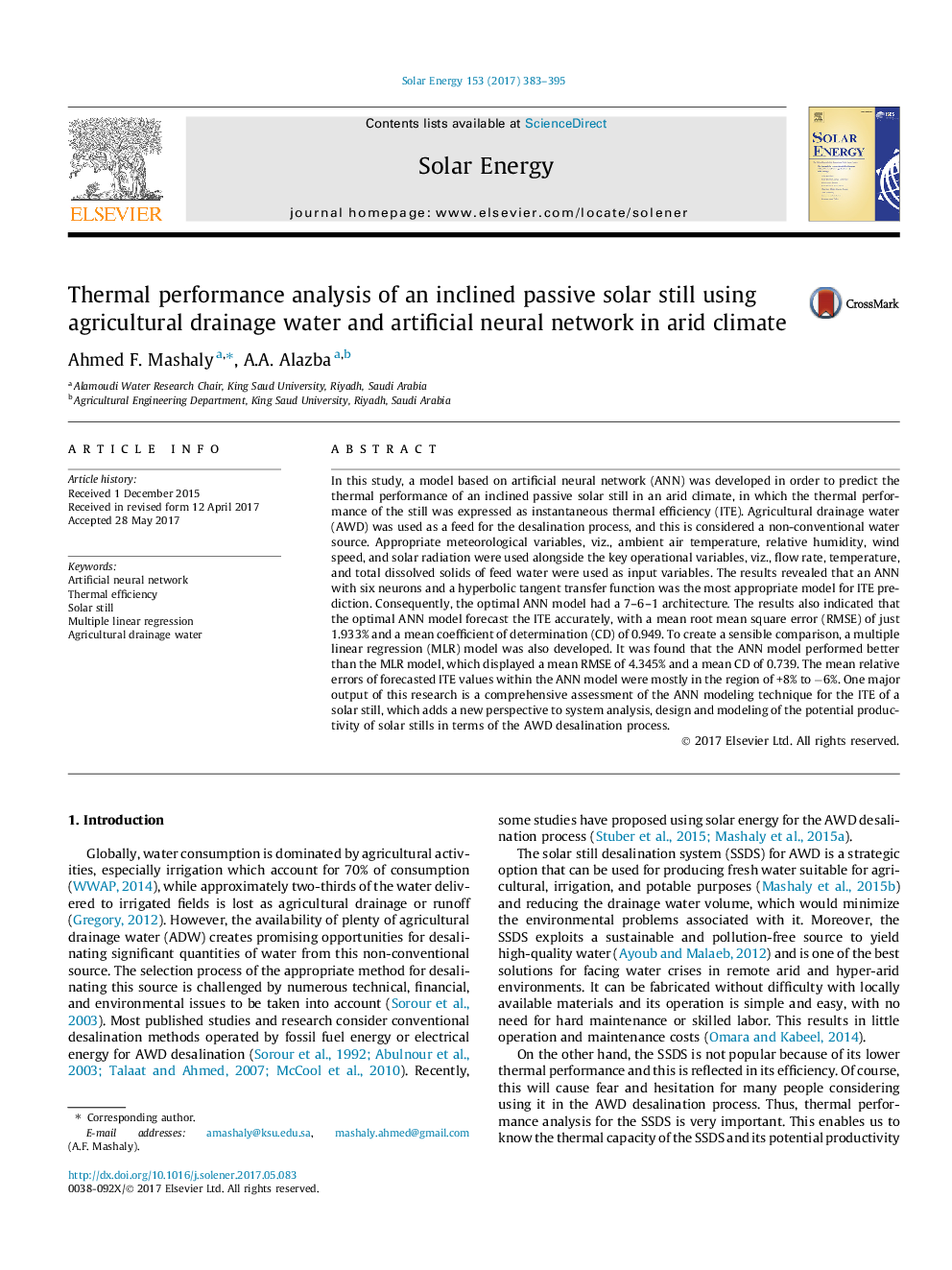| Article ID | Journal | Published Year | Pages | File Type |
|---|---|---|---|---|
| 5450731 | Solar Energy | 2017 | 13 Pages |
Abstract
In this study, a model based on artificial neural network (ANN) was developed in order to predict the thermal performance of an inclined passive solar still in an arid climate, in which the thermal performance of the still was expressed as instantaneous thermal efficiency (ITE). Agricultural drainage water (AWD) was used as a feed for the desalination process, and this is considered a non-conventional water source. Appropriate meteorological variables, viz., ambient air temperature, relative humidity, wind speed, and solar radiation were used alongside the key operational variables, viz., flow rate, temperature, and total dissolved solids of feed water were used as input variables. The results revealed that an ANN with six neurons and a hyperbolic tangent transfer function was the most appropriate model for ITE prediction. Consequently, the optimal ANN model had a 7-6-1 architecture. The results also indicated that the optimal ANN model forecast the ITE accurately, with a mean root mean square error (RMSE) of just 1.933% and a mean coefficient of determination (CD) of 0.949. To create a sensible comparison, a multiple linear regression (MLR) model was also developed. It was found that the ANN model performed better than the MLR model, which displayed a mean RMSE of 4.345% and a mean CD of 0.739. The mean relative errors of forecasted ITE values within the ANN model were mostly in the region of +8% to â6%. One major output of this research is a comprehensive assessment of the ANN modeling technique for the ITE of a solar still, which adds a new perspective to system analysis, design and modeling of the potential productivity of solar stills in terms of the AWD desalination process.
Keywords
Related Topics
Physical Sciences and Engineering
Energy
Renewable Energy, Sustainability and the Environment
Authors
Ahmed F. Mashaly, A.A. Alazba,
